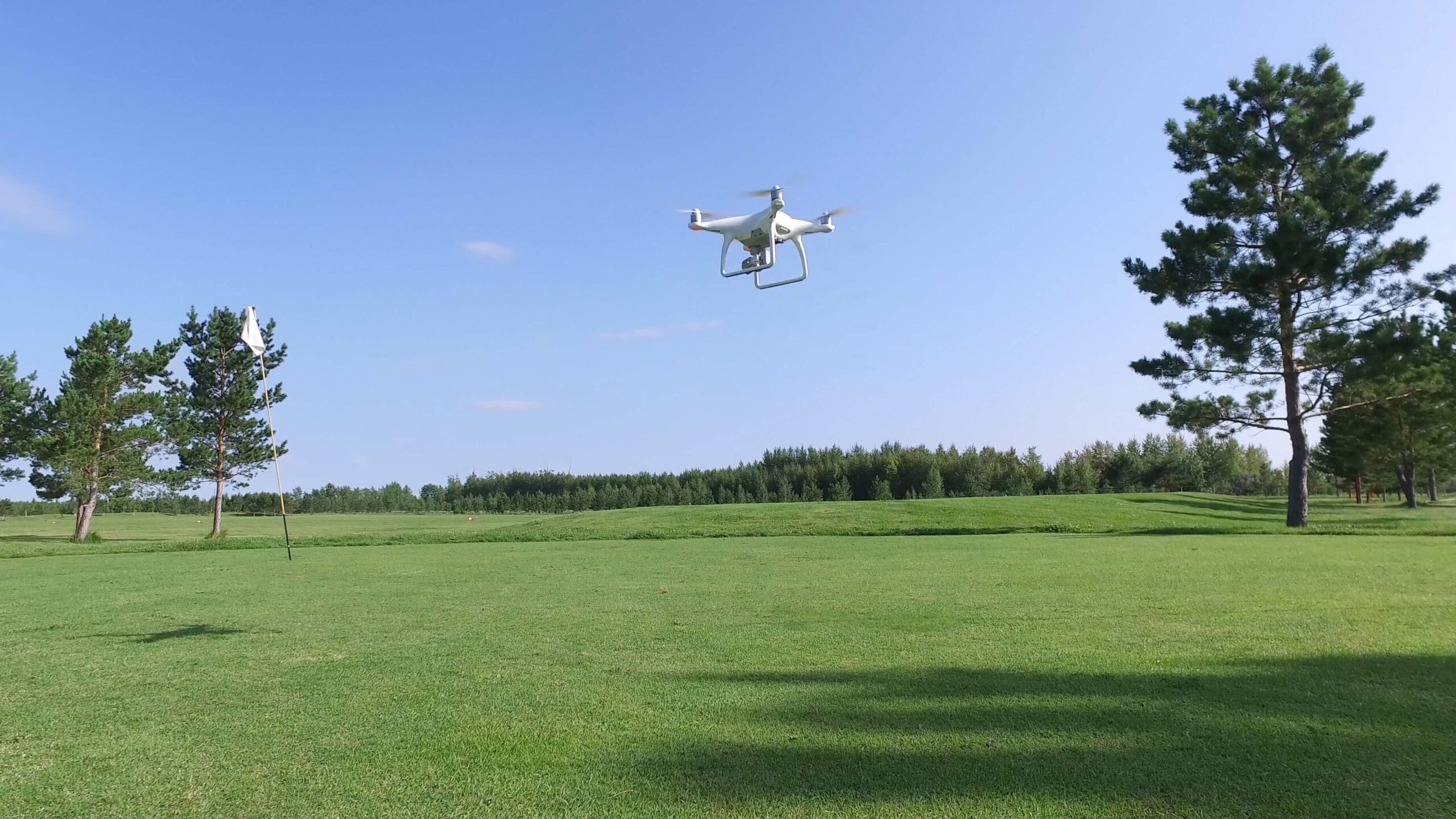THOMPSON GOLF MANAGEMENT: INNOVATING WITH DRONE MAPPING
At Thompson Golf Management, we have adopted drone technology to enhance our approach to golf course evaluations, reporting, design, and renovation planning. This technology provides new insights and efficiencies that were previously unattainable.
THE POWER OF DRONE MAPPING
PRECISION MAPPING
Advanced mapping software paired with drone technology can transform golf course management. The process involves meticulous flight planning, specifying the area, direction, altitude, and speed, all while ensuring compliance with local regulations. The software calculates the required number of images and the flight duration. After a safety check, the drone flies in a precise zigzag pattern, capturing overlapping photos with geo-location data. Once the mission is complete, the drone autonomously returns to its starting point (see Figures 1).
Surface area data measurements to verify as-biults or map area changes over time
LEVERAGING DRONE DATA FOR COMPREHENSIVE ANALYSIS
ADVANCED ANALYSIS TOOLS
The mapping software provides multiple viewing modes, including 2D, 3D, plant health, and elevation. It also includes tools for measuring distance, area, and volume. For example, accurate surface area measurements, essential for precise fertilizer or chemical applications, are easily obtained by tracing the area on the digital map.
CONTINUOUS MONITORING WITH PERIODIC FLIGHTS
Regular drone flights provide dynamic visual data, illustrating changes over time such as turf health, landscape modifications, or construction progress. This ongoing data collection facilitates proactive management and timely interventions, ensuring optimal course conditions (see Figure 2, 3 & 4).
Initial process of mapping and identifying poor performing turf areas on fairways
The same fairway area 3 months after an intensive agronomic program
Historical database for comparative purposes over time
ENHANCING GOLF COURSE DESIGN WITH DRONE TECHNOLOGY
Drone technology has significantly improved golf course design. Previously, hiring a survey company was time-consuming and costly. Now, our drones quickly map the area, and the resultant data integrates seamlessly into design programs like AutoCAD. This integration enhances the sophistication and planning accuracy of projects (see Figure 5).
FUTURE INTEGRATIONS AND INNOVATIONS
The future of drone technology in golf course management is very promising. Integrating artificial intelligence (AI) and machine learning can amplify data analysis capabilities, providing predictive insights and automated recommendations. By combining drone data with weather forecasts and historical maintenance records, we can optimize scheduling for irrigation, mowing, and other maintenance tasks, ensuring the golf course remains in impeccable condition throughout the year.
CASE STUDY: MACAU GOLF & COUNTRY CLUB
In the lead-up to the Macau Open 2024, Macau Golf & Country Club faced severe challenges due to anomalous weather conditions. The club experienced massive outbreaks of take-all root rot and armyworms, exacerbated by prolonged wet conditions, resulting in significant grass loss. The situation seemed dire, with the course overly wet for months, limiting access and compounding the damage.
ENGAGEMENT OF TGM DRONE SERVICES
Faced with this crisis, the club engaged Thompson Golf Management’s drone services to provide a solution. Our drones mapped the entire course, offering a comprehensive aerial perspective that traditional methods couldn’t achieve. This mapping allowed us to verify area take-offs and plan precise pesticide applications.
IDENTIFYING PROBLEM AREAS
The drone data identified the worst-affected areas with pinpoint accuracy. This information was crucial for creating a structured and ordered repair procedure. Using high-resolution images, we could see the exact extent of damage and prioritize areas based on severity.
STRUCTURED REPAIR PROCEDURE
We developed a clear, numbered progression plan for repairs. This plan included:
- Mapping the Damage: High-resolution drone footage identified all damaged areas.
- Prioritizing Repairs: Areas were numbered based on the severity of the damage and accessibility.
- Prioritizing Repairs: Areas were numbered based on the severity of the damage and accessibility.
- Executing Repairs: A step-by-step, ordered repair procedure was implemented, ensuring that the most critical areas were addressed first.
HIGH-LEVEL MANAGEMENT TECHNIQUES
Based on the drone footage, we employed advanced management techniques, including:
- Turf Health Monitoring: Regular drone flights provided up-to-date information on turf recovery and health.
- Water Management: Identified waterlogged areas for targeted drainage improvements.
- Pest Control: Ongoing monitoring to assess the effectiveness of pesticide applications and adjust strategies as needed.
The use of drone technology not only identified the critical issues but also facilitated a systematic and effective recovery plan, ensuring the course was back to its best in time for the Macau Open.
THOMPSON GOLF MANAGEMENT: EMBRACING INNOVATION
By leveraging advanced drone technology, Thompson Golf Management is pioneering a new era in golf course management. Our commitment to utilizing precision, efficiency, and innovation guarantees an enhanced golfing experience, setting a new benchmark in the industry.







